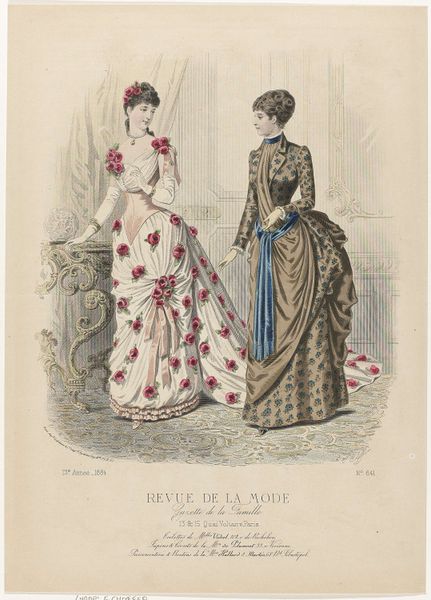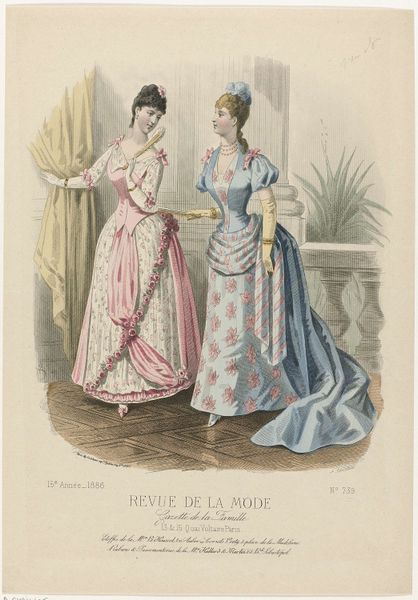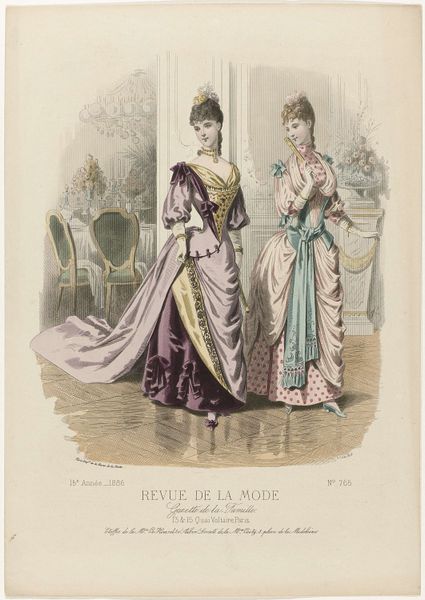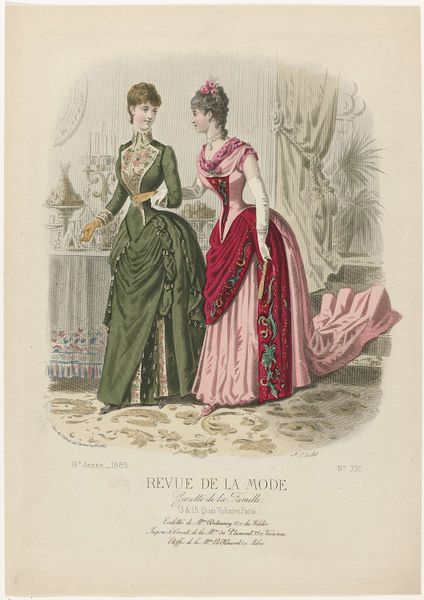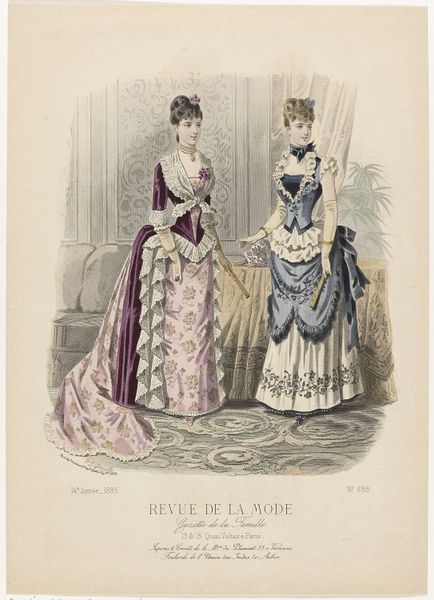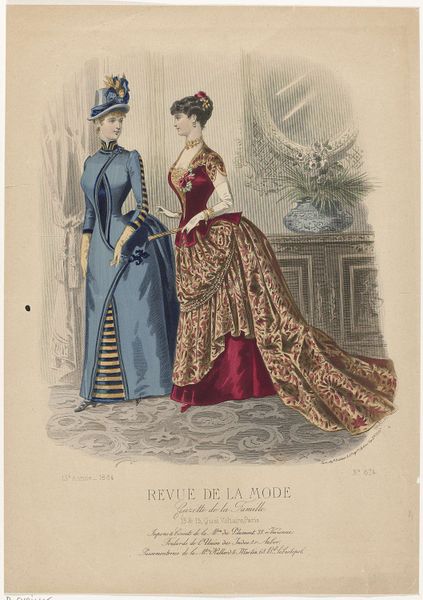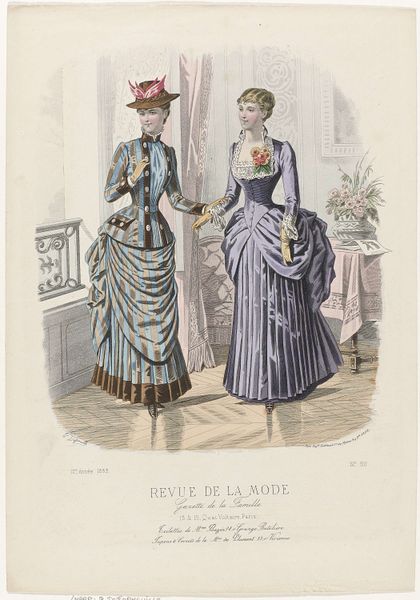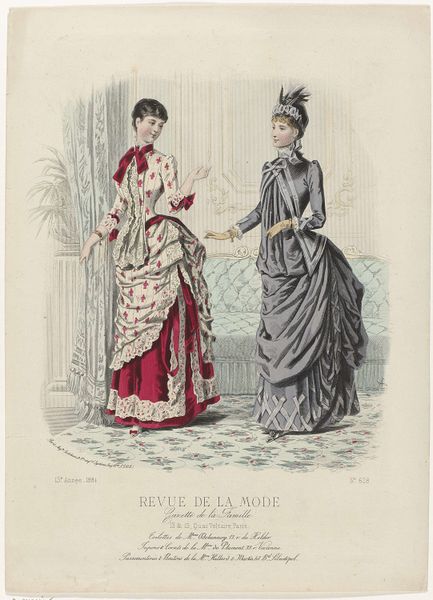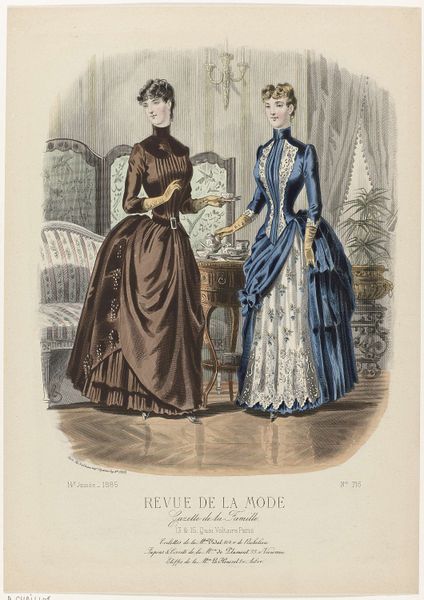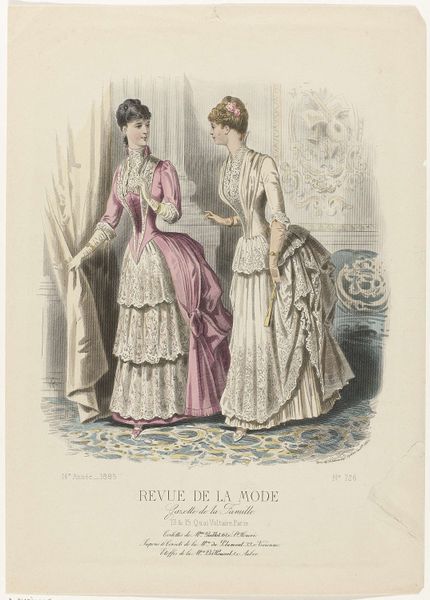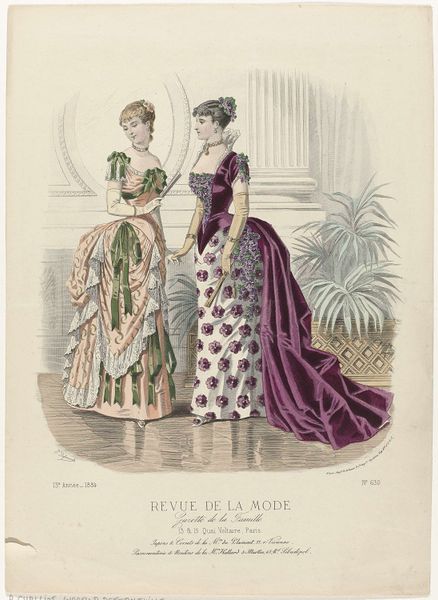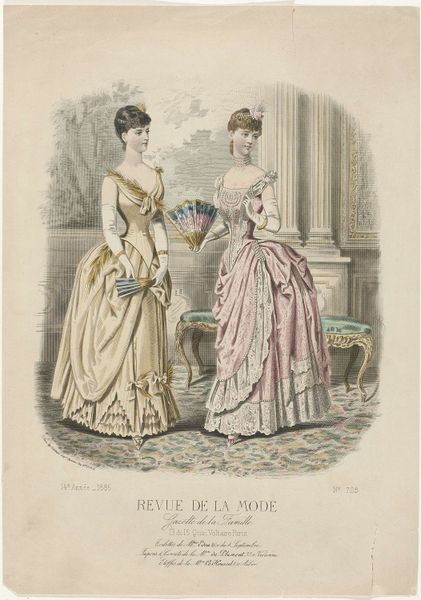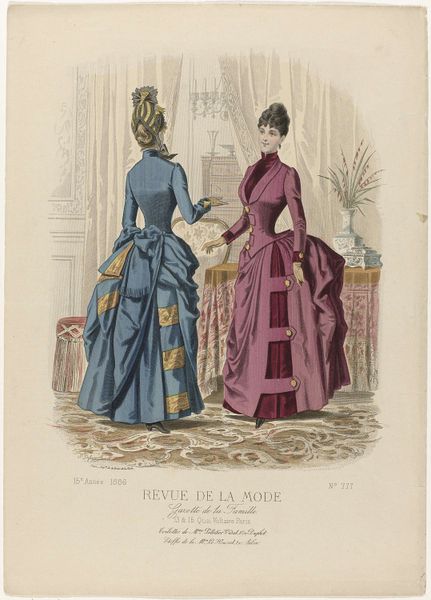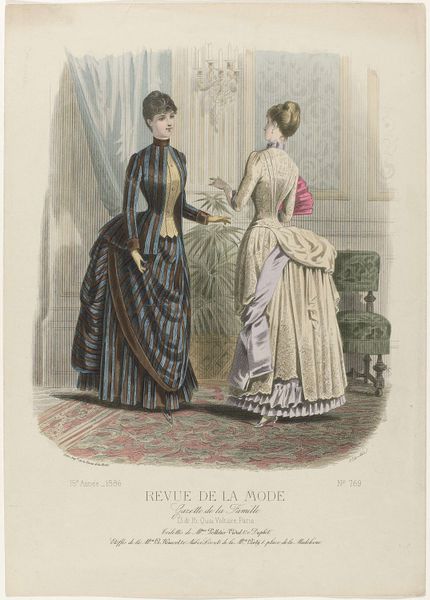
Revue de la Mode, Gazette de la Famille, 1886, 15e Année, No. 737: Toilettes de la M.on Duboys (...) 1886
0:00
0:00
drawing, print
#
portrait
#
drawing
#
art-nouveau
# print
#
historical fashion
#
watercolour illustration
#
genre-painting
Dimensions: height 375 mm, width 268 mm
Copyright: Rijks Museum: Open Domain
Curator: Standing before us is "Revue de la Mode, Gazette de la Famille," a print by A. Chaillot dating to 1886. What's your first impression? Editor: It feels intensely ornamental. The sheer amount of textile work is incredible—layers upon layers of fabric, lace, ribbons. The labour required to produce these garments… Curator: Precisely! These fashion plates weren't just about showcasing aesthetics, but about constructing specific identities and desires. They reinforced ideals of bourgeois femininity, dictating roles and expectations. Editor: And perpetuating industries, right? Think of the silk farms, the factories producing lace. Each carefully rendered fold speaks to a complex system of material production and consumption. This image served as a prompt. Curator: Yes, and it speaks volumes about social stratification, and how clothing operates within societal structures. The fashions depicted certainly highlight restricted social and political power dynamics within gendered social spheres. Editor: Looking closely, the textures seem to almost mimic each other in detail. The artist is also meticulously translating how those specific qualities should appear in mass-produced printed format. The layering is amazing. Curator: These plates actively participated in constructing those desires and perceptions of taste and class through dress, dictating which ideals people may try to reflect in their attire. Editor: Considering this was distributed as part of a "Gazette de la Famille," the implied consumer wasn't merely purchasing clothes; they were investing in maintaining a carefully orchestrated facade. Curator: It underscores that even seemingly frivolous pursuits like fashion are embedded in profound historical, economic, and socio-political webs. Fashion wasn't and isn't, purely frivolous. Editor: Agreed. Analyzing the making and reproduction is essential for understanding the true value and implication of an artwork such as this. The relationship of the labor to those designs, it is far-reaching. Curator: Examining the historical and social narrative offers much to be understood regarding social stratification through visual display. Editor: Indeed. Focusing on materiality reveals just how potent an instrument these fashion illustrations really were.
Comments
No comments
Be the first to comment and join the conversation on the ultimate creative platform.
